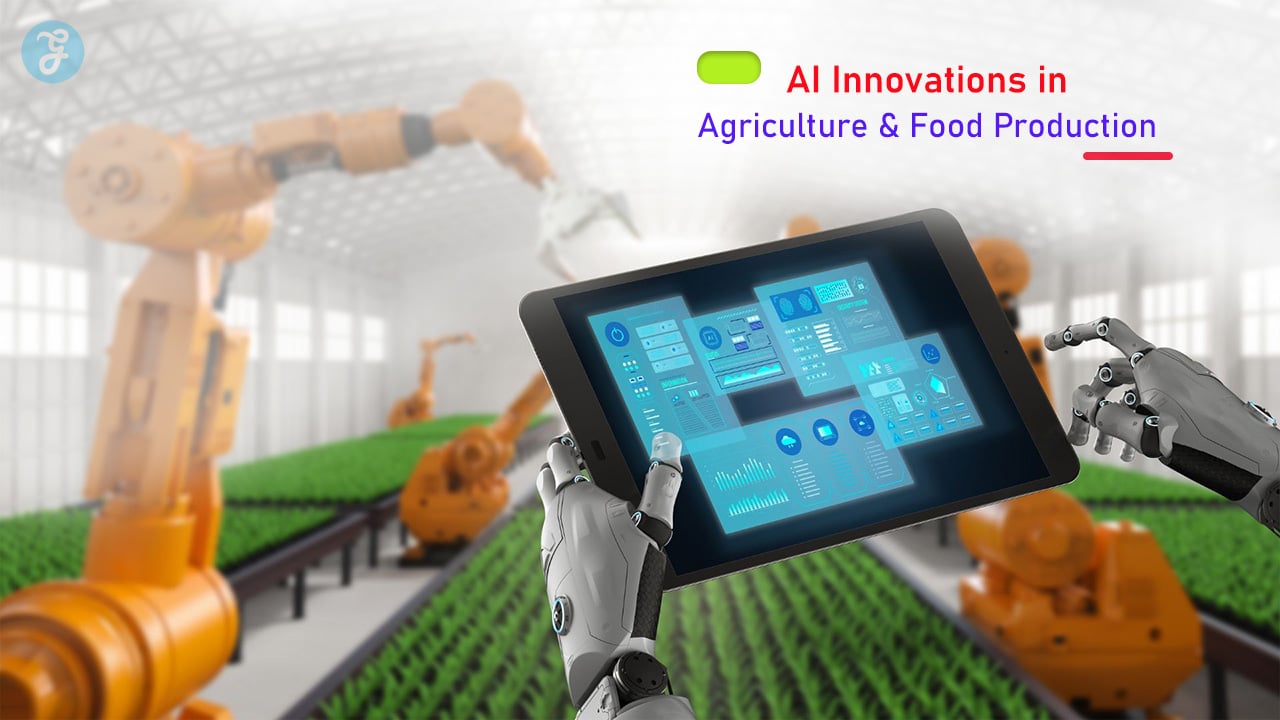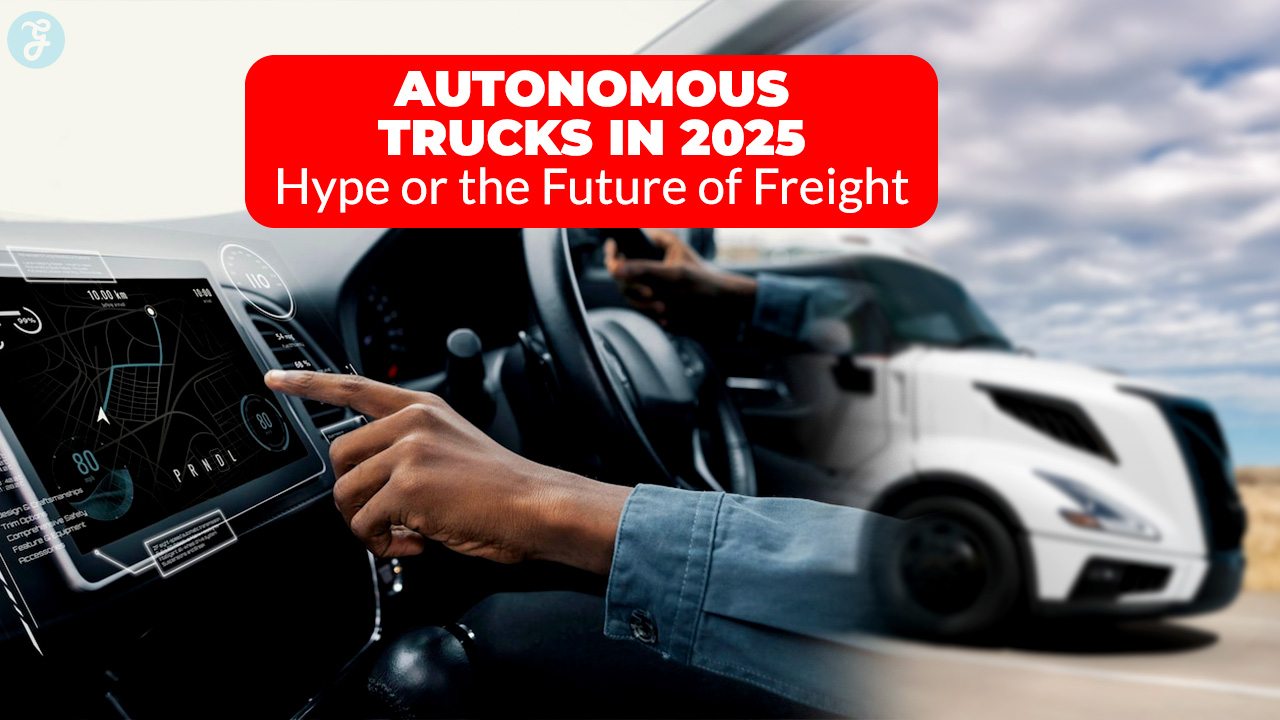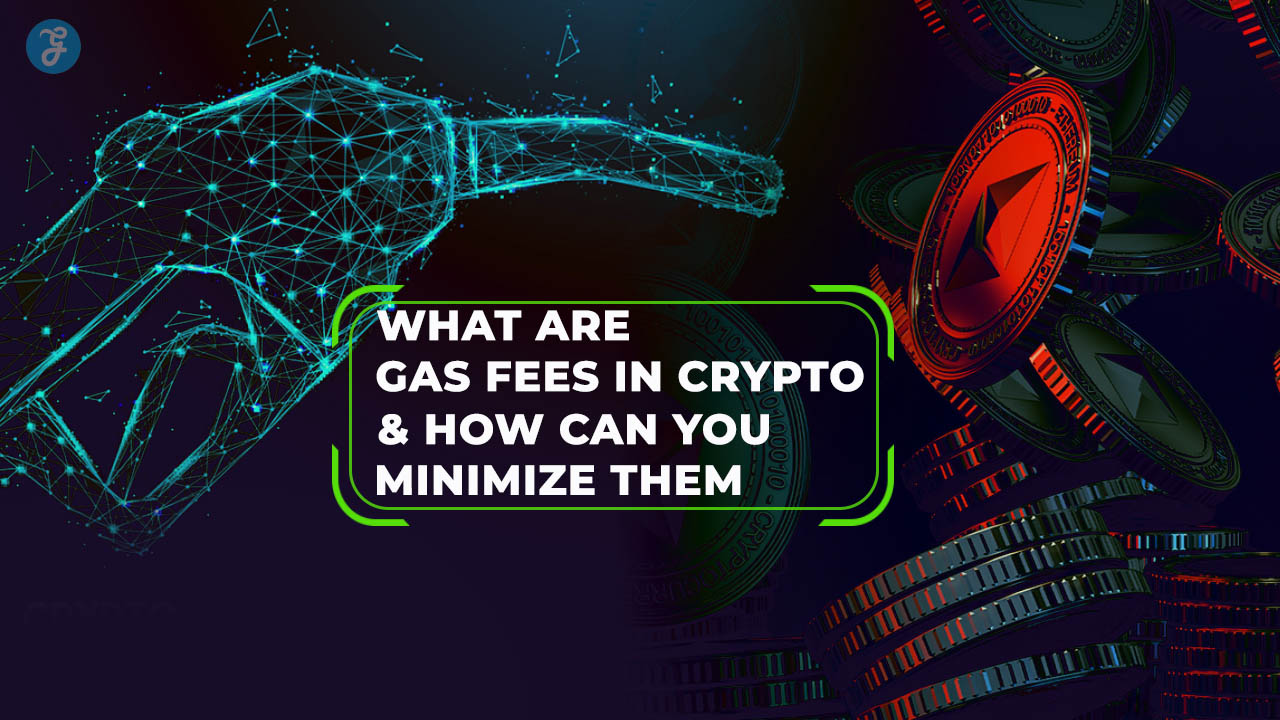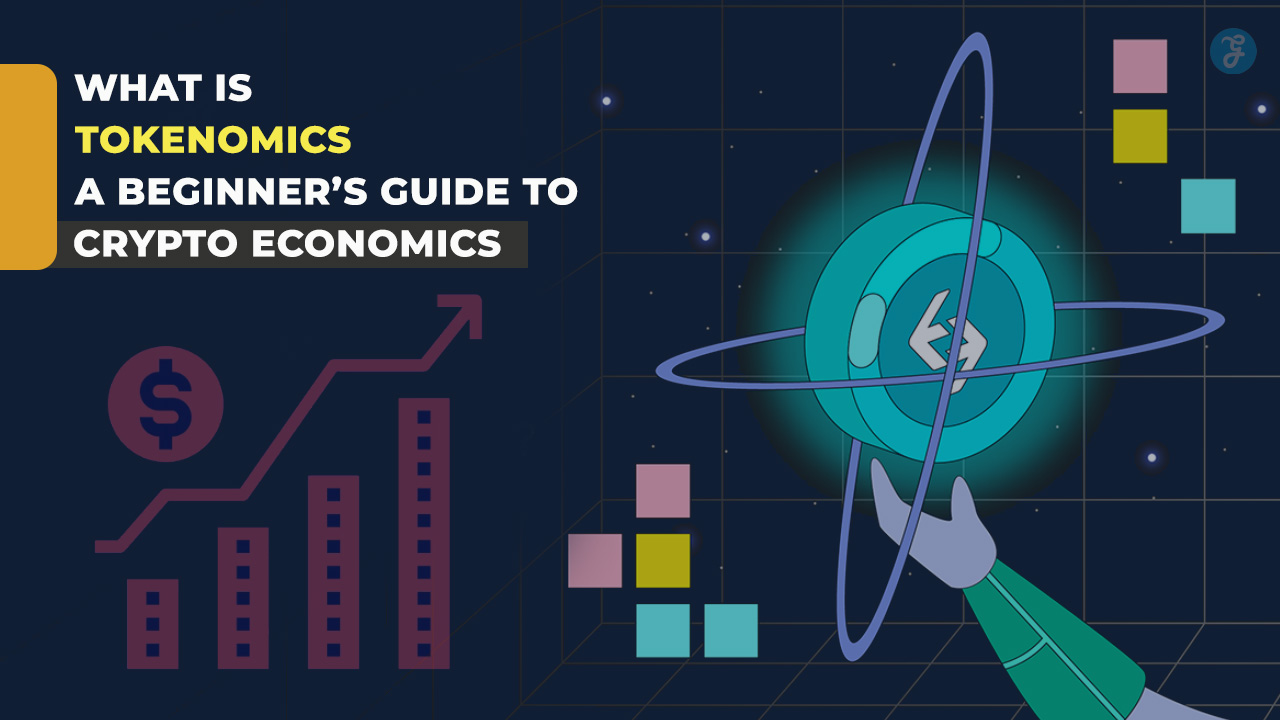The world is facing an urgent need to feed a rapidly growing population while dealing with the challenges of climate change, resource scarcity, and the sustainability of food systems.
This has made artificial intelligence (AI) a critical tool in transforming the agriculture and food production industry. From precision farming to automated harvesting and predictive analytics, AI is revolutionizing every aspect of how food is grown, harvested, processed, and distributed.
This article will explore 10 AI innovations that are having a profound impact on agriculture and food production, helping farmers make data-driven decisions, optimize resources, and ultimately produce more food with fewer inputs.
These technological advancements not only promise increased efficiency but also help address environmental sustainability, improve supply chain management, and enhance food security.
The Role of AI in Modern Agriculture
Before diving into specific innovations, it’s important to understand how AI is transforming agriculture.
AI’s ability to analyze large datasets, make predictions, and automate complex processes is a game-changer for an industry that has traditionally relied on manual labor and empirical decision-making.
By integrating AI, the agriculture sector can achieve higher productivity, better crop yields, and reduced waste, all while making smarter, more sustainable use of natural resources.
Key Benefits of AI in Agriculture
- Precision farming: AI enables farmers to make accurate decisions regarding planting, irrigation, fertilization, and harvesting, minimizing waste and maximizing productivity.
- Automation: AI-powered machines can take over labor-intensive tasks such as weeding, planting, and monitoring crop health.
- Predictive analytics: AI systems can analyze weather patterns, soil conditions, and crop data to predict outcomes and optimize farming operations.
- Sustainability: AI helps reduce water usage, fertilizer overuse, and pesticide application, promoting more sustainable farming practices.
1. Precision Farming with AI and Machine Learning
One of the most groundbreaking AI applications in agriculture is precision farming, which refers to using AI and machine learning to collect and analyze data from various sources to improve farming practices.
Precision farming allows farmers to monitor every aspect of their operations, from soil health to crop growth and weather conditions.
How AI is Used in Precision Farming
- Soil analysis: AI-powered sensors analyze soil conditions, such as moisture levels, pH, and nutrient content, to determine the best time for planting and the appropriate amount of fertilizer needed.
- Irrigation management: AI systems can monitor weather forecasts and real-time soil conditions to optimize water usage, reducing water waste while ensuring crops are properly hydrated.
- Crop health monitoring: AI can detect early signs of disease, pests, or nutritional deficiencies by analyzing images and sensor data, allowing for timely intervention.
Through data-driven decision-making, precision farming helps farmers achieve higher yields and more efficient use of resources, which is especially crucial in regions facing water scarcity or soil degradation.
2. AI-Driven Crop Monitoring and Disease Detection
Detecting diseases early is one of the most challenging aspects of farming, but AI is revolutionizing crop monitoring by providing tools that can detect diseases and pests at early stages.
AI-powered drones and computer vision technologies are now able to scan fields and identify problems that the human eye might miss.
AI Technologies in Crop Monitoring
- Drone-based surveillance: Drones equipped with AI-powered cameras can capture detailed images of crops, identifying areas affected by diseases, pests, or drought. These drones can scan large fields in a fraction of the time it would take a farmer to walk through them.
- Computer vision: AI systems can analyze images of crops to detect symptoms of diseases such as leaf spots, discoloration, or abnormal growth. By recognizing these patterns early, farmers can take action before the disease spreads.
- Real-time alerts: AI-driven systems send real-time alerts to farmers, enabling them to respond promptly to threats like fungal infections or invasive pests.
By automating the detection of crop diseases and pest infestations, AI helps reduce crop losses and minimizes the need for excessive pesticide use, making farming more sustainable and profitable.
3. Automated Harvesting with AI-Powered Robots
Labor shortages have become a significant issue in the agricultural industry, especially when it comes to the physically demanding task of harvesting.
AI-powered robots are now stepping in to fill the gap, offering efficient, automated solutions for harvesting fruits, vegetables, and grains.
Key Features of AI Harvesting Robots
- Autonomous operation: AI-powered robots can autonomously navigate fields, identifying ripe crops using computer vision and sensor technologies.
- Selective harvesting: These robots can differentiate between ripe and unripe produce, ensuring that only the best quality products are picked.
- Efficiency: AI robots can work around the clock, significantly increasing harvesting speed and reducing the risk of human error or injury.
One notable example is Rubion, an AI-powered strawberry-picking robot that can harvest fruit with precision, significantly reducing labor costs and increasing efficiency. Automated harvesting robots are crucial for addressing labor shortages while ensuring crops are picked at peak freshness.
4. AI in Livestock Monitoring and Management
AI is also playing a transformative role in livestock management by improving animal health, welfare, and productivity. With AI-driven systems, farmers can monitor livestock in real-time, detect early signs of illness, and optimize feed and breeding schedules to improve efficiency and reduce waste.
AI Applications in Livestock Management
- Health monitoring: AI-powered sensors attached to livestock can monitor body temperature, movement patterns, and feeding behavior, identifying signs of illness or distress before they become critical.
- Automated feeding: AI systems can determine the optimal amount of feed for each animal based on its age, weight, and growth patterns, ensuring the efficient use of resources.
- Breeding optimization: AI analyzes genetic data and historical records to recommend ideal breeding pairs, improving the overall health and productivity of the herd.
By implementing AI in livestock management, farmers can increase productivity, reduce animal suffering, and optimize feed and healthcare, contributing to sustainable farming practices.
5. Predictive Analytics for Crop Yield Optimization
AI-driven predictive analytics is helping farmers plan for the future by forecasting crop yields based on historical data, weather conditions, and soil health. These insights allow farmers to make informed decisions about planting, irrigation, and harvesting, ensuring maximum yield from their crops.
How Predictive Analytics Works in Agriculture
- Weather forecasting: AI systems can predict weather patterns, helping farmers determine the best time to plant, irrigate, or harvest crops to avoid losses due to extreme conditions.
- Yield prediction models: Using historical data, AI can forecast expected yields for specific crops, allowing farmers to adjust their planting strategies accordingly.
- Risk management: Predictive analytics helps farmers prepare for potential risks, such as droughts or pest outbreaks, by providing actionable insights in advance.
By leveraging AI-based predictive models, farmers can plan more effectively, optimize their use of resources, and reduce the impact of unpredictable factors, ultimately leading to higher profitability and food security.
6. AI and Sustainable Water Management
Water is a finite resource, and efficient water use is becoming increasingly important as climate change impacts global water availability. AI is playing a critical role in sustainable water management in agriculture by helping farmers use water more efficiently and reducing wastage.
AI in Irrigation and Water Management
- Smart irrigation systems: AI-driven irrigation systems analyze soil moisture levels, weather forecasts, and crop needs to provide just the right amount of water, reducing waste and preventing over-irrigation.
- Water usage optimization: AI systems monitor water usage in real-time, identifying leaks, inefficiencies, or areas where water usage can be reduced.
- Climate adaptation: AI can help farmers adapt to changing climate conditions by analyzing historical weather patterns and providing strategies for water conservation in drought-prone areas.
By incorporating AI technologies into water management systems, farmers can significantly reduce water consumption, ensure their crops get adequate hydration, and contribute to more sustainable farming practices.
7. Supply Chain Optimization in Food Production with AI
The agricultural supply chain is complex, involving multiple stages from farm to fork. AI is revolutionizing the food supply chain by improving transparency, efficiency, and traceability. These improvements help farmers, processors, and retailers work together to reduce waste, improve food safety, and ensure timely delivery of fresh produce.
How AI is Improving the Food Supply Chain
- Inventory management: AI can predict demand and manage inventory levels, ensuring that food products are delivered at peak freshness and reducing food waste.
- Traceability: AI-powered blockchain technology allows for complete traceability of food products, from farm to consumer, improving food safety and ensuring compliance with regulations.
- Logistics optimization: AI helps optimize transportation routes, reducing fuel consumption and delivery times, ensuring that products reach consumers faster and with minimal environmental impact.
AI-driven supply chain optimization contributes to reduced food waste, better quality control, and more sustainable food production practices, benefiting both producers and consumers.
8. AI-Powered Climate Adaptation Strategies for Farmers
Climate change is one of the biggest threats to global agriculture, with unpredictable weather patterns, extreme temperatures, and shifting growing seasons. AI is helping farmers adapt to climate change by offering strategies and insights that mitigate the impact of these changes on crop production.
AI in Climate-Resilient Farming
- Crop selection: AI systems analyze climate data and recommend crop varieties that are more resilient to changing weather patterns, helping farmers adapt to new environmental conditions.
- Drought management: AI-powered systems can predict drought conditions and suggest water-saving practices or alternative crops that require less water.
- Real-time adaptation: AI tools provide real-time recommendations based on weather forecasts, helping farmers adjust their practices quickly to avoid losses due to sudden climate shifts.
By leveraging AI technologies, farmers can build resilient farming systems that are better equipped to handle the challenges posed by climate change, ensuring long-term productivity and food security.
9. AI in Food Processing and Quality Control
AI is not only transforming farming but also making significant strides in food processing and quality control. AI-powered systems are improving efficiency, accuracy, and consistency in food production, ensuring that high-quality products reach consumers.
AI Applications in Food Processing
- Automated inspection: AI systems equipped with computer vision can inspect food products for quality defects, such as size, color, and shape, ensuring consistency and reducing waste.
- Predictive maintenance: AI predicts when food processing equipment is likely to fail, enabling preventive maintenance and minimizing downtime.
- Shelf-life prediction: AI analyzes environmental factors such as temperature and humidity to predict the shelf life of food products, helping manufacturers make data-driven decisions about storage and distribution.
By integrating AI-powered quality control systems, food manufacturers can reduce waste, improve product quality, and streamline operations for better efficiency.
10. AI and the Future of Urban Agriculture
As urban populations grow, the demand for locally produced food is rising. AI is playing a pivotal role in the development of urban agriculture through the implementation of smart farming technologies in cities. From vertical farms to rooftop gardens, AI is making urban farming more efficient and scalable.
AI in Urban Agriculture
- Vertical farming: AI helps optimize indoor vertical farming systems by controlling light, temperature, and water levels to maximize crop yields in small urban spaces.
- Smart greenhouses: AI-powered systems can monitor and adjust environmental conditions in urban greenhouses, ensuring optimal growing conditions for fruits and vegetables.
- Data-driven urban farming: AI analyzes data from urban farming operations to recommend the most efficient crops and growing methods, reducing resource usage and maximizing output in limited spaces.
AI-driven urban agriculture offers a solution to the challenges of land scarcity, resource management, and the increasing demand for locally grown food, making it a key player in the future of sustainable food production.
Conclusion
The integration of AI in agriculture and food production is transforming the industry at every level, from precision farming and automated harvesting to supply chain optimization and urban farming.
By adopting these 10 AI innovations, farmers and food producers can achieve higher yields, greater efficiency, and sustainable practices, helping to feed a growing population while minimizing environmental impact.
As AI continues to advance, its role in agriculture and food production will only grow, offering even more sophisticated solutions for addressing the challenges of modern farming.
By staying at the forefront of these innovations, farmers and food producers can ensure the long-term sustainability and success of their operations, contributing to a more resilient and secure global food system.







































